
Digital formats bring in new artists and audiences
Sukhmani Khorana & Zelmarie Cantillon – Western Sydney University
“It was really good for us to just focus on what we were doing, and not being worried about being the only ethnic person or people performing our ethnicity”
Key takeaways
- Diverse reference groups provide fresh perspectives. For artists and producers, seeking advice from racialised artists and First Nations artists and artists with disabilities can invite new ways of thinking through conceptual and technical challenges.
- Capacity-building and flexibility are vital. In addition to providing platforms and mentoring, it is important that artists and arts workers from diverse backgrounds be given the space to tap into community knowledge and innovate in their practice.
- Digital programming offers new possibilities for accessibility. Online events and projects open up new ways of thinking about accessibility for deaf audiences and opportunities to engage new audiences across borders and beyond a one-off performance.
Background
As a collaboration between two arts organisations across state borders – Campbelltown Arts Centre (New South Wales) and Arts House (Victoria) – BLEED was designed to be innovative and intrinsically diverse. The first iteration of the six-year initiative took place in 2020, with a focus on how digital technologies saturate our everyday lives. Intended to be both in-person and online, COVID restrictions forced it to move to digital-only, affording new ways of creating and engaging with art in online spaces.
Learning from reference groups
During the production process, artists were guided by conversations with reference groups about how to interrogate the online realm through artistic expression. The initial group was made up of four individuals: Dan Koerner, Creative Director of Sandpit Digital; Joel Spring, a Wiradjuri man and co-founder of Future Method Studio; Miyuki Jokiranta, producer and presenter for ABC Radio National; and Akil Ahamat, arts worker and interdisciplinary artist working in sound, video and installation. Reference groups that are diverse in composition can not only guide the technical aspects of a production, but also provide points of connection and conceptual learning for emerging artists.
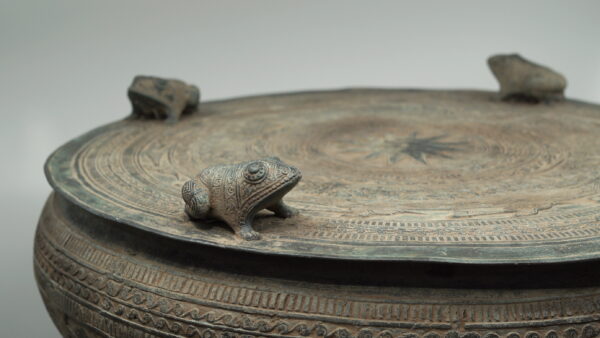
BLEED artists Victoria Pham and James Nguyen – who created the sonic work RE:SOUNDING using a 3,000-year-old Vietnamese Đông Sơn drum – were especially appreciative of the mentoring provided by the reference group. Pham and Nguyen spoke of how the groups’ internal diversity meant that they were not the only people of colour in the room. Pham said this made it a ‘really safe space’ for them to bring up concerns and discuss the technical and conceptual underpinnings of their work as it developed.
Nguyen spoke at length about learning from First Nations experience and expertise via reference group member Joel Spring: ‘he kept us on our toes and really interrogated how we were engaging with a lot of First Nations theory in the process of repatriation. We weren’t the only people trying to reclaim our culture.’ Nguyen explained that through these discussions, the premise of the project was refined: ‘eventually, we hit on the term of “rematriation” instead of repatriation, where it’s not just purely focused on a returning of an object or returning of physical things, but actually, it’s a collective, collaborative, generative [process of] social reconnection’.
Capacity-building and collaboration
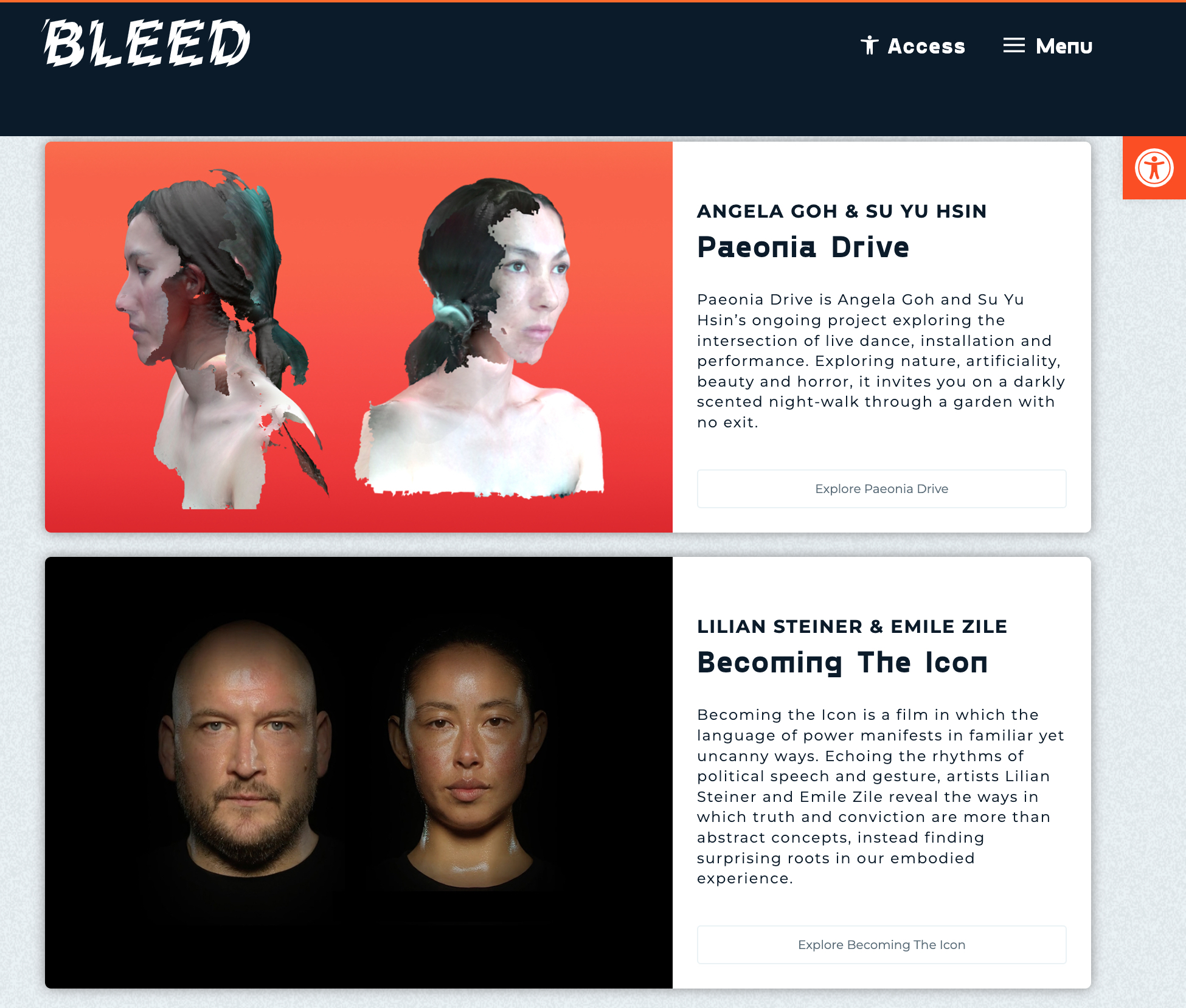
The curatorial team behind BLEED facilitated the existing ideas and objectives of artists rather than dictating the themes and content of their work. As Pham explained, ‘James and I had already started talking about working in this particular capacity and expressing our connection to our heritage and ongoing engagement with [the] Vietnamese diaspora in Australia through an object’. From this point on, they were able to source the traditional Vietnamese drum which became central to their project. Using the drum, Pham described that the pair ‘built the entire research momentum around our engagement with our historical past, with decolonising access to objects and sounds.’ The BLEED team gave them adequate funding and time to ‘pay people properly’, ensuring contributors from their communities were not exploited. Michael Dagostino, Director of Campbelltown Arts Centre, says ‘artists and community members’ time should be financially remunerated ‘as they are usually the only ones in the room not on a salary’.
The project also extended capacities of Arts House staff in digital curating, producing and delivery. Artistic Associate Samira Farah brought emergent ways of working with communities and an intersectional approach to engaging artists and communities of practice informed by longstanding work in collectivising, radio producing, and prior institutional roles. The public program BLEED Echo was led by Farah and tapped into critical discourse that wrestled with the key themes and conceptual frameworks that informed the framing of BLEED.
The artists also commented on how their practice benefited from the commitment to diversity embedded in BLEED. According to Nguyen ‘it was really good for us to just focus on what we were doing, and not being worried about being the only ethnic person or people performing our ethnicity’.
Expanding access
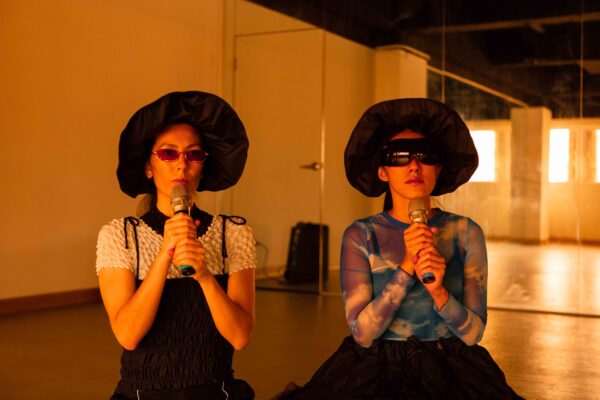
BLEED’s pirouette to online-only delivery involved challenges, but also opportunities to rethink accessibility and audience engagement. For each artistic project, Farah held conversations around ‘how many different ways you can … approach access that isn’t just the usual Auslan interpreters or captioning’ and therefore had to work with live captioning and visual descriptions. A second reference group was put together to review the website from the perspective of being accessible to people with disabilities. This group of artists provided suggestions on the site’s visuals, text, language and use of menus, and also invited a test audience member to review the live performances. Brittany Green, Creative Producer from Campbelltown Arts Centre, said the group was vital for making the project as accessible as possible.
Tara Prowse, Creative Producer at Arts House, ultimately found that the digital format of BLEED became one of its key strengths. In particular, she noted its capacity to attract a potentially borderless, national audience. Pham’s feedback reinforced this idea with reference to audiences of both the online performance and its archived recording that is still available to access: ‘our project wasn’t necessarily contained to the Vietnamese diaspora in Australia or on the East Coast, but because we had brought in musicians from South-East Asia, from Indonesia and Vietnam, our audiences became much more international, and the fact that it was digital allowed us to engage with the Vietnamese community globally’. Dagostino went on to say ‘the platform broke down barriers to create opportunities for audiences to engage on their own terms’
Prowse elaborated on how all the emerging artists ‘who aren’t as represented by large venues, large institutions’ in BLEED brought their own audiences: ‘I think that public program was an opportunity both for them to take up that space online, but also for them to bring their own audiences to the broader program’.
Outcomes
Accessible archives of the works within BLEED have further extended their audiences. Prowse noted that this has enabled ‘being able to go back to those works and have a beautiful library of works that are accessible in different ways’. In terms of audience engagement, this translated into them having ‘good participation from audiences with different access requirements, because I think they did feel like … there [were] components of this program that they could access in a way that it wasn’t just a one-off’. The team behind BLEED are hopeful that they can continue to engage with this new audience for the 2022 iteration, which includes collaboration with new partner organisations Taipei Performing Arts Center (TPAC) and Museum of Contemporary Art, Taipei (MoCA) as well as artists based in Taiwan and Japan.
This case study was created in partnership with Western Sydney University and supported by Create NSW
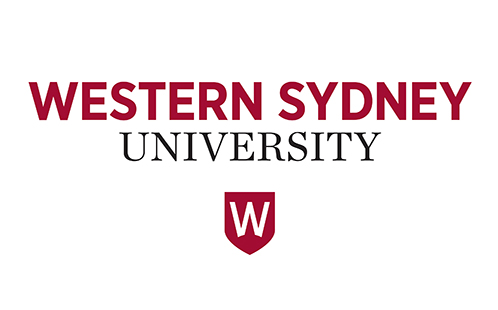
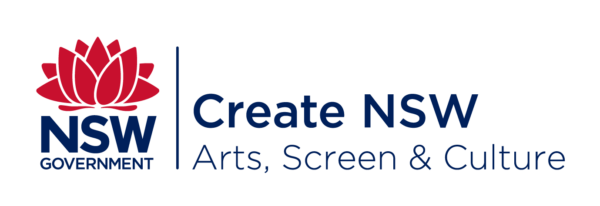
What is the Imagine Project?
We’re publishing case studies and documenting Australia’s best work in advancing cultural diversity and racial equity and inclusion in the arts through the Imagine Australia Project, managed by Diversity Arts Australia (DARTS) and funded via the Australia Council’s Re-Imagine project and supported by Creative Equity Toolkit partner, British Council Australia. To find out more click below – or read the other case studies as they go live here.
